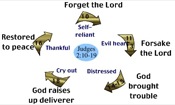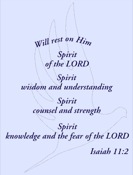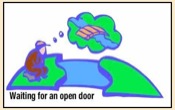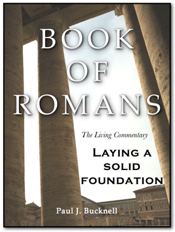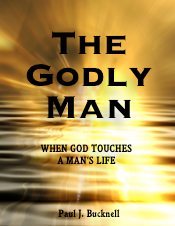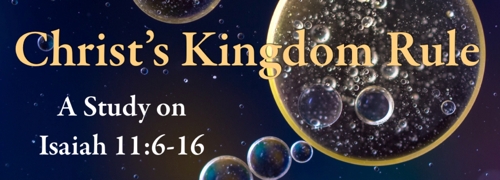
Isaiah 11:6-16 Three Interpretations
Argument #1 Word context | #2 Logical presentation
#3 Last section's timing | #4 'My holy mountain' | #5 'In that day'
Isaiah 11:6-16 Bible study questions
Isaiah Outline | Timeline | Overview | Brief Introductions
Isaiah 1-6 | 7-12 | 13-23 | 24-27 | 28-33 | 34-35 | 36-39 | 40-66
Christ's Rule: Isaiah 11:6-16
#2 Argument of Logical Presentation
Purpose
The logical presentation serves as the second of five arguments that presents Isaiah 11:1-9 as one unit.
Isaiah 11:6-16’s Two Possibilities
The typical reader assumes that Isaiah 11 is of the same period unless pointers interrupt the flow. Grammar, structural, or topic shifts are a few of these pointers. Argument one showed how Isaiah 11’s grammar is characterized by a uniform section with each verse starting with the same “and.”
 We dissociate verses 1-5 from 6-9 because of the assumed change of topic and scene, but this is unnecessary. If this were the case, we expect section three, verses 10-16, to follow verses 6-9.
We dissociate verses 1-5 from 6-9 because of the assumed change of topic and scene, but this is unnecessary. If this were the case, we expect section three, verses 10-16, to follow verses 6-9.
However, we have good evidence that 11:10-16 refers to the New Testament era, the same as verses 1-5. The fulfillment of 11:10-16 follows Jesus’ earthly ministry during the time of His apostles and onward.
Let's say at this point that Isaiah 11 is divided up into three sections (1-5, 6-9, 10-16)(2). We can establish that 11:10-16 pertains to the New Testament era. In that case, it becomes difficult to justify thrusting 11:6-9, which lacks any distinct markers, into a far removed time from the apostles’ period. Some commentaries suggest that 11:10-16 alludes to a mighty king like Hezekiah. Still, there is no support for this interpretation in the New Testament, even if Hezekiah was one of the inspiration sources for this idea. This explanation is unlikely.
Instead, we find evidence that confirms that the Spirit of God anointed Christ, that same Jesus the Messiah, went out to minister, calling others to follow Him. The second possibility, of Isaiah 11:6-16 belonging to the same age as verses 1-9, is consistent as there are no unique transition markers. We will discuss the phrase “in that day” (11:10) later. What Christ has started, He continues in the church. This is the most normal interpretation.
Two Possibilities |
11:1-5
|
11:6-9 Harmony Restored |
11:10-16 Worldwide Following |
Possibility #1(Believe 11:6-9 is separate) |
Distant age (millennium or heaven) |
NT age Church or don't know |
|
If we can prove 11:10-16 refers to the NT age, then it is extremely awkward for 11:6-9 without any special announcement to refer to an age far distant in time after this.
|
|||
Possibility #2(Believe 11:1-9 is one unit) |
NT age (Christ's earthly ministry) |
NT age (Christ in church) |
NT age (Christ in church) |
| This is very consistent and what we would expect without any special transition markers. We will speak of the "in that day" later. What Christ has started, He continues in the church. | |||
There are three interpretational keys. First, verse 10’s “root of Jesse” picks up on verse 1’s usage of Jesse: “Then a shoot will spring from the stem of Jesse, and a branch from his roots will bear fruit” (Isaiah 11:1). Jesse’s descendants were prophesied to make a tremendous difference in the world (2 Sam 7:13-17). Jesus is literally the descendant of Jesse and David, born in Bethlehem.
Second, the age of verses 10-16 describes how the nations will come to know the Lord. “Then it will come about in that day that the nations will resort to the root of Jesse.” Jesus initiated the age of missions and commanded His disciples to make disciples worldwide (Mat 28:18-20). This is now history. Paul proves this by quoting this passage in Romans: “There shall come the root of Jesse, and He who arises to rule over the Gentiles, in Him shall the Gentiles hope” (Rom 15:12). There is no question that this era refers to the Messiah and the affect His rule will have on the nations (lit. Gentiles).
Third, there was an unexpected prediction that the Jewish people would return to the land of Israel during this age. “And assemble the banished ones of Israel, and will gather the dispersed of Judah from the four corners of the earth” (Isaiah 11:13). The great return of Jews to Israel started with the rebirth of Israel in the Zionist movement. It continues today with an increased outpouring of hatred against Jews worldwide. We expect this age to close with more Jewish people coming to know the Lord (Isa 11:11-14). In the last seventy years, what has happened is a return to the ‘homeland’ with their nation Israel restored. The hardening of the Jewish people will disappear at the end of the age (Rom 11:25-26).
Prophetic passages can be hard to interpret, as one is unsure whether one passage is connected to another or, if so, how they are interconnected. However, in Isaiah 11, we have sufficient evidence that 11:10-16 refers to the NT age. It becomes a highly awkward interpretation for 11:6-9 to refer to a distant time after the New Testament age without any unique indication from the passage.
Argument #3: The last section (11:10-16) refers to the NT age | Main article
Notes
(2)Isaiah 11 might better begin in 10:33 with a 'behold' and the following series of 'wav' conjunctions until chapter 12:2 or 2:5 and 6, that is, if 12:2 serves as a quote of a song. In this case, 12:5-6 serves as a fit conclusion of this section of Isaiah.
(3) Some commentaries suggest this might refer to some great King like Hezekiah. We see no NT support for this, even if he partially inspired this concept. Even this, though, is not likely. Instead, we see much confirmation that Christ was anointed with the Spirit in full and thus ministered.

